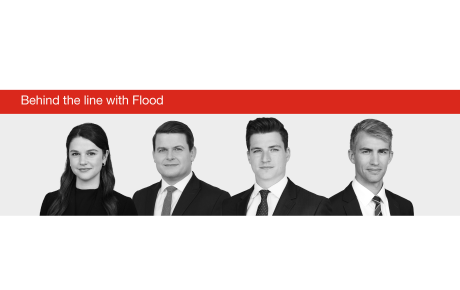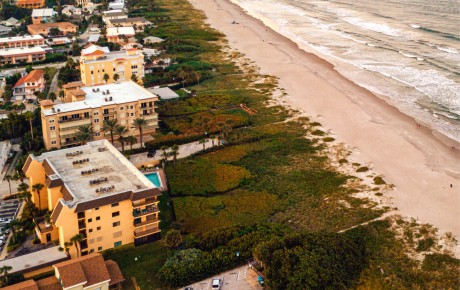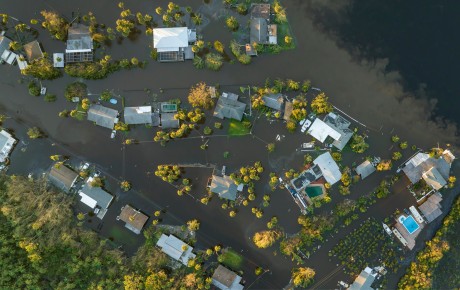
Flood lessons from Harvey
A shortage of loss adjusters poses a flood challenge to insurers.
Enough rain to sink a city? According to a Californian geophysicist, the weight of 50 inches of rain dumped on Houston by Hurricane Harvey caused the ground to temporarily sink by 2cm. The storm (along with hurricanes Irma and Maria) also piled more pressure on the beleaguered National Flood Insurance Program (NFIP), whose future was being debated in Washington when the storm hit.
Already submerged under record levels of debt, the NFIP was forced to apply to Congress for debt relief of $16 billion as it struggled to cope with a huge volume of Harvey-related claims. While the lawmakers fight it out – President Trump has signed a temporary extension to the NFIP’s authorisation lasting until December 8 – insurers and homeowners continue to absorb the early lessons from Harvey.
Flooding exposes underinsurance
First is the unprecedented scale of Harvey’s flooding, given it was a comparatively weaker tropical storm by the time it hit Houston. Part of the reason was the way the storm ‘stalled’ over the area, continuing to dump rain for much longer than other similar-sized storms have in the past.
One obvious consequence has been a realisation by many US homeowners – not just in Texas – that they are now exposed to the risk of being flooded. “There are a lot of people who have never been covered for flood before who will now be thinking about how they can buy flood protection. We saw the number of quote requests and firm orders going up through our system post Harvey and not just in Texas but across the US. It has raised awareness of flood as a genuine peril,” says Daniel Alpay, Line Underwriter for Hiscox London Market.
The scale of Harvey’s flooding was unprecedented given it was a comparatively weaker tropical storm by the time it hit Houston.
Finding loss adjusters
Another lesson has been in finding enough loss adjusters to assess the damage. “There is a real lack of claims adjusters on the ground,” says Alpay. “High demand means insureds are, in some cases, having to wait weeks for someone to come and see them.” It’s not a shortage that can be easily addressed either, adds Kieran Giddons, Property Claims Underwriter for Hiscox London Market. “This is an issue the entire market is facing. There are certainly hurdles to accessing local independent adjusters with the required licences and an intimate understanding of the impacted areas.” The solution, according to Alpay, might lie in the London Market contractually tying loss adjusters in for future catastrophe events: a recommendation which was made in the recent London Market dry run exercise, which sought to test its response to a possible mega-catastrophe.
“There is a real lack of claims adjusters on the ground. High demand means insureds are, in some cases, having to wait weeks for someone to come and see them.”
A proving ground
Despite the loss adjusting challenge, Alpay believes Harvey will not only highlight the need for widespread flood cover but also help to serve as a proving ground for the private flood market. “We have now had a number of flood events that have affected the private flood insurance market as well as the NFIP. If, by settling claims faster and giving broader coverage, we have proved our products can more than compete with the NFIP, then that will only help.”
That’s one reason why the London Market is focused on quick payment, says Giddons. “Our absolute priority following Harvey has been to enable our trusted partners on the ground to respond to our insureds as swiftly as possible. One way of doing that has been to provide significant loss funds to our coverholders and third party administrators to enable them to release money as soon as coverage for an insured is confirmed.”
Overcoming the barriers
To take full advantage of the opportunity however, the private market will need to overcome the barriers in the current buying process, says Alpay. “Insurance in the US is a very transactional market where retail agents are not particularly incentivised to talk to their clients about new private flood coverage options because it creates a lot of extra work and hassle for something which doesn’t make them much money as a business. We have to take away that friction and make it easier for agents to get quotes and for homeowners to buy policies. This could be by automatically triggering a flood quote during the homeowner’s insurance quoting process, for example, or by raising awareness of the peril by delivering better ways in which the homeowner can check their own flood risk and obtain quotes.”
“Insurance in the US is a very transactional market where retail agents are not particularly incentivised to talk to their clients about new private flood coverage options..."
Harvey has exposed the risk for many US homeowners of not having flood cover, and theuncertainty surrounding the NFIP's future could help persuade many to turn to the private flood market for protection.



